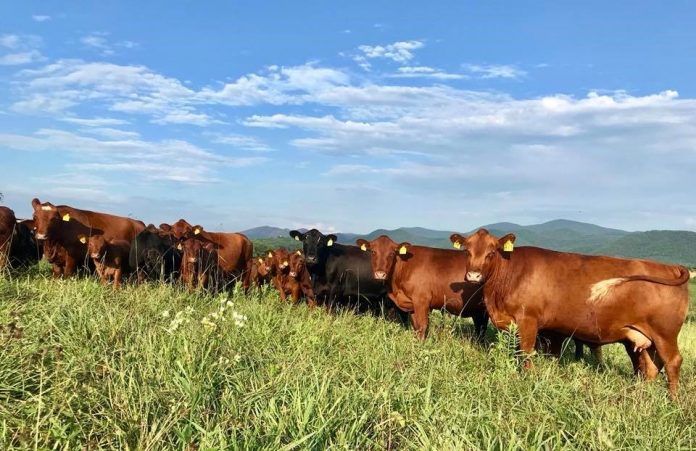“All of our food comes from the soil. When we begin to destroy the biology of the soil, we destroy the food network that gives us life.” – Dr Paul Stamets, Mycologist, author of “Mycelium Running”.
While modern technology, knowledge, and organization have greatly increased agricultural productivity, there has been insufficient regard for sustainability and overall efficiency. Conventional intensive farming practices have significant negative consequences for the land and surrounding ecosystems. By disrupting the natural function of these habitats, the valuable ecosystem services they provide are compromised. Substantial changes need to be made to current agricultural systems to decrease their negative impacts on humans and natural resources while addressing the goal of meeting global food needs into the future. There is a pressing need for an agriculture that regenerates ecosystem function rather than compromising the environment and ecosystem services humans and all life depends upon. This will require educating and making decisions based on how to manage to restore ecosystem function. Fortunately, increasing numbers of farmers Globally are now adopting agricultural practices to improve and regenerating soil health as the base to enhance human well-being and livelihoods. Consumers are also becoming more aware of issues surrounding agrarian practices, and choosing food produced sustainably and with less environmental impact.

Big problems and big opportunities with sustainable agroecosystems
Natural systems make up a complex web of interconnecting functions, with nothing operating at full health if parts of the system are damaged. Thus, we must consider these systems as a whole, examining not only how each component functions, but how they all fit together and interact in the bigger picture. A healthy ecosystem provides valuable benefits humans gain from nature, which increase the sustainability of farming, enhance natural pest control, boost yields, and reduce costs, thereby increasing profitability. Unfortunately, many conventional Intensive farming methods practices damage the very ecosystems they rely on to function optimally. And have been implicated as contributors to the many serious human health issues of the modern era.
These include commonly advocated and used management practices such as soil tillage, inorganic fertiliser and pesticide use that damage our natural soil functions provided by extensive and essential biological processes. This unsustainable vicious circle may ultimately lead to land that is damaged beyond repair and no longer suitable for farming. This effect is especially pronounced in the health of our soils. In the best-case scenario, this means a change in the food we have available to us; in the worst-case scenario, there would be insufficient food to go around. With the human population increasing prodigiously, reduced food production would exacerbate the problem.
Managing crops and grazing in a way that encourages fully functional soil for a healthy agroecosystem alleviates many of these issues entirely. The problems of many current tillage-based cropping and feedlot-based livestock production systems are avoided if ecologically sensitive management of livestock in mixed crop and grazing agroecosystems are implemented. Carbon-rich soils benefit all terrestrial ecosystems, and managing to increase soil carbon is fundamental to improving ecosystem services including water infiltration and retention; soil retention; soil nutrient cycling and retention; biodiversity enhancement including fungi, microbes, insects, plants, and animals; wildlife nutrition and habitat; livestock forage; all of which can help support ranch profits and resilience in changing climates.
Practices that can be adopted to enhance soil carbon substantially include regenerative cropping, regenerative grazing in cropped areas and grasslands, restoration of shelter trees in grazing lands, and reduced rangeland wildfires. The key to optimising ecological function and reversing degradation caused by previous mismanagement in both cropping and grazing systems is using management practices that elevate soil health. Specifically, soil ecological function is maintained by minimising bare ground by maintaining plant and litter cover throughout the year, using perennial rather than annual plants, using diverse species mixes and cover crops, managing grazing to promote the most productive plants, maximising plant growth days each year, eliminating high impact tillage practices, using organic soil amendments, and minimising artificial inorganic fertiliser and biocides use.
While people have minimal capacity to control non-anthropogenic drivers of environmental change, human impact on the environment caused by unsustainable agricultural practices can, where excessive soil loss has not occurred, be addressed by reversing the degradation of the landscapes by switching from extractive and environmentally harmful practices and inputs to regenerative grazing and cropping practices. This requires using management practices that effectively and efficiently restore hydrological cycles, soil health, and critical ecosystem services delivery.
The water cycle is the thermostat of global climate change governing massive energy changes required to melt polar ice, water evaporation, and precipitation, and the carbon cycle is affected by the water cycle. Atmospheric water vapour and droplets are the most prevalent and potent greenhouse gasses accounting for ~90% of the greenhouse effect and the most limiting commodity for plant growth production that provides food for animals and people. The water cycle and vegetation play a fundamental role in maintaining local climate through energy transfers in the process of evapotranspiration (ET); specifically, the interaction of water and plants dampen temperature maxima resulting from intense solar radiation. Given water vapour’s potency as a heat absorber, evapotranspiration from plants transfers heat from the earth’s surface into the atmosphere, thereby cooling the surface, and accounts for about 24 % of natural global hydrological cooling.
Modification of landscapes by agriculture, overgrazing, deforestation, wetland drainage, and urbanisation that remove transpiring vegetation diminishes the self-regulatory damping of solar radiation and temperatures by healthy ecosystems. For evapotranspiration to deliver substantial cooling requires extensive ground cover of actively growing plants to maintain a healthy hydrological cycle. Elevation of soil carbon enhances both surface water infiltration, soil moisture holding capacity and soil fertility needed to support plant growth and high green leaf area that increase evapotranspiration and plant biomass.
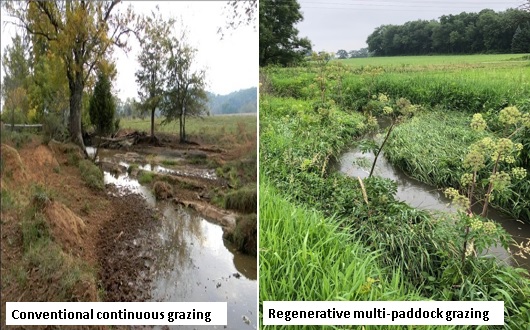
The belief that cattle and other ruminants are bad for the climate
This belief is both accurate and false. First, the truth. There is so much land that is poorly managed with farmers generally producing cattle on pastures that are usually heavily and continuously stocked and degraded. They then grow and fatten the cattle in feedlots for finishing on grain. If you grow corn, or whatever else you’re feeding the cattle in feedlots, the conventional way, with tillage, inorganic fertilisers, and biocides, you’re destroying soil and need more fertiliser as time progresses. Both poor pasture and rangeland management and fattening cattle on grains in feedlot systems using grains produced in conventional crop production decrease soil carbon, increase carbon emissions from the soil, and fossil energy use in growing the crops, employing inorganic fertilisers and transport costs. Additionally, this management and inputs decrease soil function, reduce the provision of essential ecosystem services that healthy soil with high organic matter provides, and make farming increasingly less viable economically.
Second the untrue portion: the regenerative grazing and cropping people we work with Globally have taken degraded soil and grazing land and reversed the degradation through regenerative management. This involves minimizing chemicals and biocides, and not finishing livestock with feed that comes from conventional agriculture. Managing crops and grazing using regenerative principles increases soil carbon and function while minimizing carbon emissions to increase soil carbon sequestration. Combining regenerative cropping and regenerative grazing has enormous capacity to take carbon out of the air and put it in the ground while improving all the ecosystem services from healthy soil, mainly repairing the hydrological cycle to get more water in the soil, which improves everything.
Under the regenerative management, cattle can make great things happen for the climate and soil. There is widespread evidence of poorly managed land under poor management, and most people blame the livestock. However, it is the way the cattle have been managed that is the real culprit. It is essential to distinguish between these two, one is bad for the climate, and the other is not bad but entirely beneficial. Grassland ecosystems co-evolved with herbivores as complex, dynamic ecosystems comprised of grasses, soil biota, grazers, and predators and deteriorate in the absence of periodic defoliation.
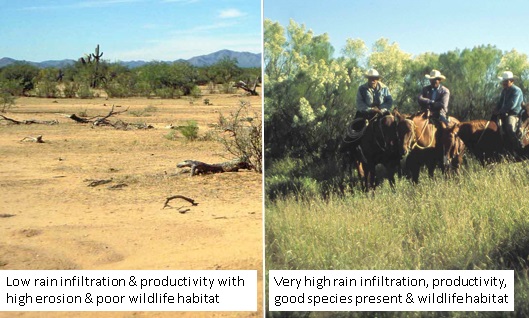
The myth that we cannot farm without chemical and pesticide inputs
Regenerative agriculture offers flexible, adaptable guidelines for restoration of soil health, feeding the world’s people, and ensuring that farmers can make a living without damaging the environment and contributing to improving human health. Globally there is substantiated evidence from the tropics and temperate regions of the world where farmers have managed to minimise soil disturbance and adopt practices to increase soil organic matter and cultivate beneficial microbes to build the soil in both conventional and organic farms. Pundits of industrial agriculture believe that fertile soil is not renewable, cannot be replaced, and that chemical fertilisers and pesticides are necessary to feed the world’s growing population. However, fertility can be improved quickly through cover cropping and returning organic matter to the land to build soil health and food production by increasing mineral availability and organic matter that supports humans’ life systems and other organisms.
Every farm and region is unique to a degree, and what works well in the tropics does not necessarily work in the temperate grassland or tropical forest regions. However, applying the principles focused on improving soil health and function achieve the same goal of restoring the productive capacity of the land and farmers’ ability to earn a living and support their families while providing quality food to the customers. The principles required in all forms of agriculture involve three elements — minimal soil disturbance, growing cover crops, and devising complex cropping rotations that involve animals while avoiding tillage and chemical and biocide inputs that destroy the biological base. Optimal, regenerative outcomes are achieved in farming systems only if all these elements are present.
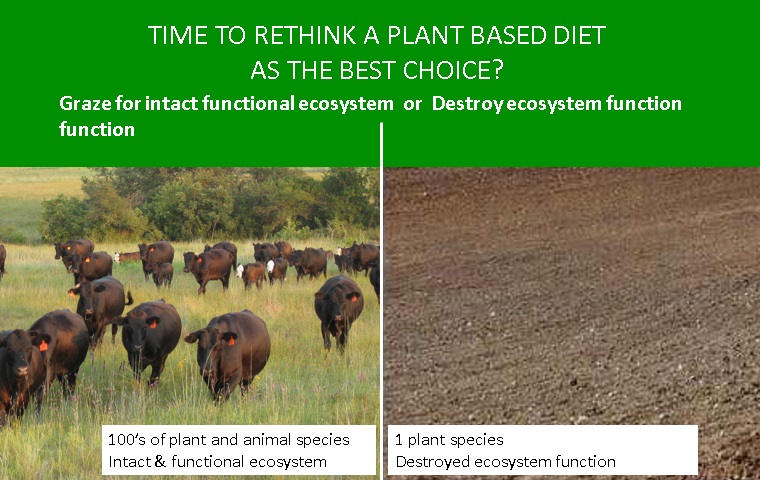
Facilitating the transition to a regenerative agriculture
Understanding why regenerative farmers and ranchers adopt these innovative methods is key to developing the right incentives. This broader, more holistic approach is appealing due to a suite of ecological, economic, and social benefits. Land managers are adopting these biologically centric principles and practices not entirely for increasing soil carbon sequestration even though that is an important outcome. Their primary focus is on rebuilding resilience into the landscape to enhance productivity, economic, and numerous co-benefits.
The rewards of adopting regenerative principles and practices are an essential leverage point to employ in communications, incentive programmes and educational strategies aimed at land managers. Ultimately, adopting regenerative practices effectively will reduce their risk to stressors and increase their adaptive capacity. Regenerative cropping and grazing can enhance soil carbon levels and biodiversity, increase the manager’s ability to adapt to changing circumstances to avoid negative impacts, and be rewarded for improving positive results to enhance resilience, prosperity, and quality of life as well as contribute to local and global cooling.
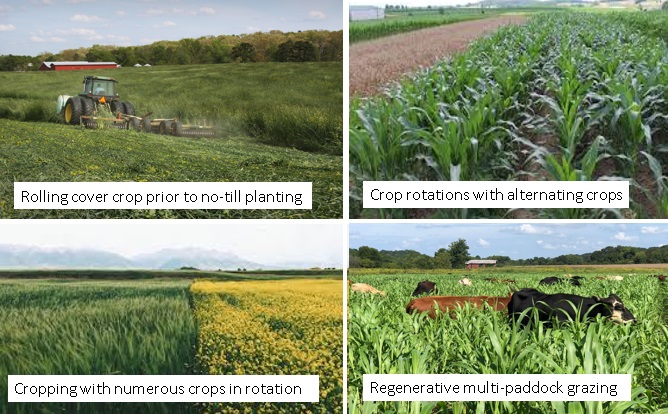
Richard Teague, from Rangeland, Wildlife and Fisheries Management, Texas A&M University

